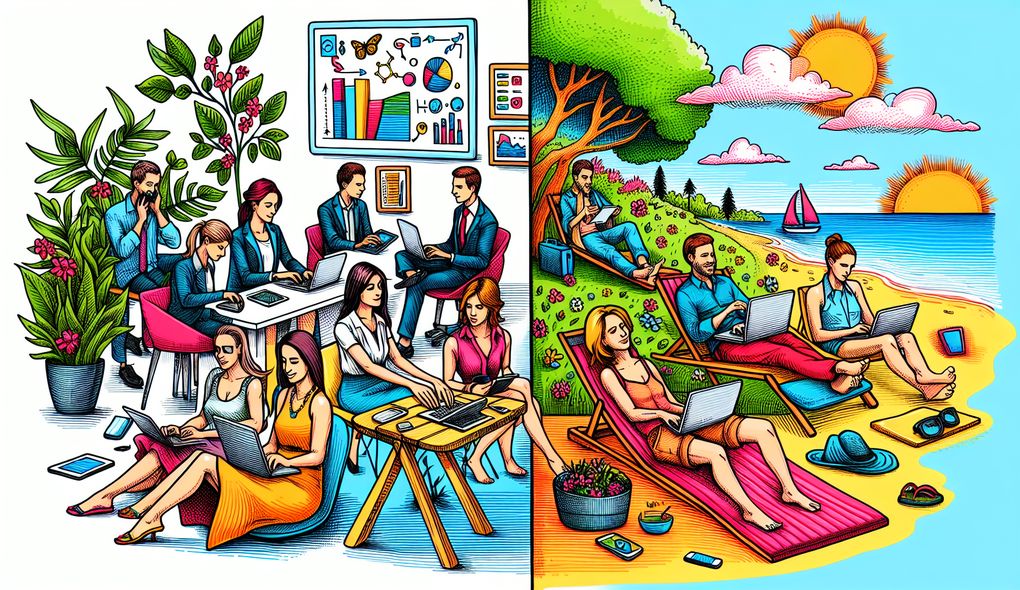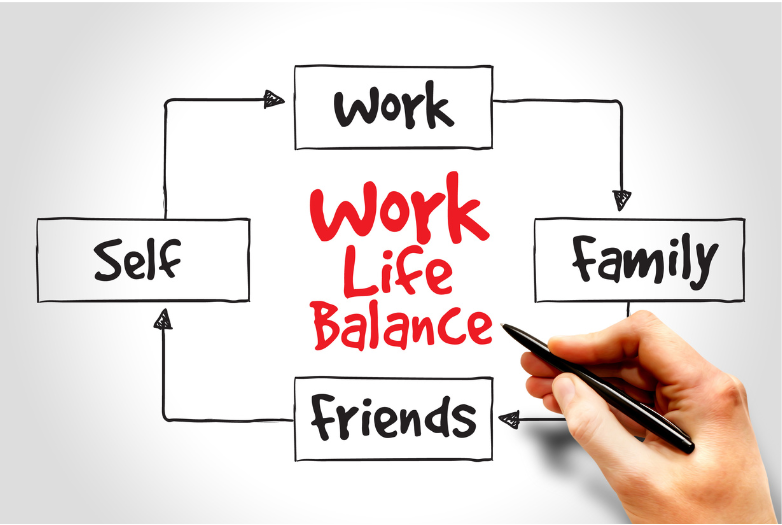Work-Life Balance in the Digital Age: How to Maintain Harmony in a Tech-Driven World
In today’s fast-paced world, the boundaries between work and personal life have become increasingly blurred. With the rise of digital tools, remote work, and constant connectivity, it can be difficult to achieve a healthy work-life balance. Whether you’re checking emails late into the evening or answering work calls during family dinner, the lines between “work” and “life” often become indistinguishable.
However, finding a balance between work responsibilities and personal well-being is more crucial than ever. In this article, we’ll explore how you can navigate the challenges of work-life balance in the digital age and offer actionable tips to maintain a healthy equilibrium.
The Impact of Technology on Work-Life Balance
The Double-Edged Sword of Connectivity
Technology, while an incredible enabler, has also introduced significant challenges to maintaining a healthy work-life balance. Here are some key ways technology impacts our ability to maintain balance:
- Constant Availability: Thanks to smartphones and email notifications, we’re always on. Whether we’re at home, on vacation, or even during personal time, the expectation to remain connected to work never stops.
- Blurring of Boundaries: Remote work, video conferencing, and the accessibility of work-related documents on mobile devices have made it harder to switch off from work and dedicate time to personal activities.
- Digital Overload: The sheer volume of messages, notifications, and tasks can lead to a constant feeling of being overwhelmed and stressed. Digital burnout is becoming increasingly common as a result.
The Rise of Remote Work
The global shift towards remote work has been a game-changer, but it also brings its own set of challenges. While working from home provides flexibility and convenience, it often means that employees find it harder to set boundaries. The ability to “work from anywhere” can lead to working anytime, with no clear distinction between work hours and personal time.

Strategies for Achieving Work-Life Balance in the Digital Age
Achieving a healthy work-life balance requires intentional effort, especially in the digital era. Here are several strategies you can implement to regain control over your time and energy:
1. Set Clear Boundaries
One of the most important aspects of maintaining balance is setting clear boundaries. Here’s how you can do it:
– Designate Specific Work Hours: Even if you’re working from home, create a structured schedule. Set clear start and end times for your workday to prevent tasks from spilling over into your personal time.
– Create a Dedicated Work Space: If possible, create a specific area in your home dedicated to work. This can help you mentally separate your work time from your personal time.
– Communicate Expectations: Make it clear to your colleagues, clients, and managers when you’re available for work and when you’re offline. Setting these expectations helps you avoid constant interruptions.
2. Embrace Technology for Better Productivity
Instead of letting technology overwhelm you, leverage it to boost productivity and maintain focus:
– Use Task Management Tools: Tools like Trello, Asana, or Microsoft To Do can help you stay organized and prioritize your tasks efficiently. These tools allow you to track deadlines, assign tasks, and avoid unnecessary back-and-forth communication.
– Set Time Limits: Use apps like Focus Booster or Forest to limit time spent on digital distractions. Setting time blocks for work tasks and breaks ensures you stay focused on important activities.
– Automate Routine Tasks: Use automation tools like Zapier to streamline repetitive tasks, such as organizing emails or scheduling social media posts. This reduces the mental load of managing daily operations.
3. Digital Detox and Unplugging
Taking regular digital breaks can help you recharge and regain focus. Here are a few ways to unplug:
– Practice Tech-Free Time: Set aside specific times each day or week to disconnect from technology. Whether it’s during family meals, while exercising, or before bed, creating tech-free zones helps you be more present in the moment.
– Unplug on Weekends: Designate at least one day over the weekend to disconnect from work emails, social media, and your phone. This will give your mind the chance to reset and prepare for the week ahead.
– Use ‘Do Not Disturb’ Mode: Enable “Do Not Disturb” on your phone to avoid unnecessary notifications during off-hours.
4. Prioritize Self-Care
Maintaining a healthy work-life balance requires taking care of your physical and mental health. Here are some self-care practices that can enhance your overall well-being:
– Exercise Regularly: Regular physical activity, such as walking, running, or yoga, helps reduce stress and improve focus. It also provides a break from the digital world, allowing your body and mind to recharge.
– Mindfulness and Meditation: Incorporating mindfulness practices into your daily routine can help you reduce stress, stay present, and improve your emotional resilience.
– Sleep Hygiene: Adequate sleep is essential for both physical and mental health. Avoiding screen time before bed and creating a calming bedtime routine can improve sleep quality.
5. Foster Strong Social Connections
Strong relationships with family, friends, and coworkers can provide emotional support and improve your overall well-being:
– Schedule Regular Social Interactions: Whether it’s catching up with friends over coffee or spending quality time with family, make an effort to nurture your social connections.
– Engage in Meaningful Conversations: Instead of constantly checking emails or social media, engage in face-to-face conversations that allow you to connect on a deeper level.
How Employers Can Support Work-Life Balance
Employers play a significant role in helping employees achieve work-life balance, especially in a digital-first environment. Here are a few strategies employers can adopt:
– Encourage Flexible Work Hours: Allow employees to set their own hours or work remotely, enabling them to balance personal and professional responsibilities.
– Promote Mental Health and Wellness: Offer resources for mental health support, such as counseling services or wellness programs, to help employees cope with stress.
– Model Healthy Work-Life Balance: Leaders should model the behaviors they want to see in their teams. When employees see managers setting boundaries, taking breaks, and disconnecting, they are more likely to follow suit.
FAQs: Work-Life Balance in the Digital Age
Q1: How can I stop work from interfering with my personal life?
A1: Start by setting clear boundaries for work hours, turning off notifications during personal time, and practicing regular digital detoxes. Establishing a clear division between work and life is key to maintaining balance.
Q2: What if my employer expects me to be available 24/7?
A2: Communicate openly with your employer about the importance of maintaining a work-life balance. Set expectations and suggest alternative ways to manage urgent tasks without sacrificing personal time.
Q3: Can technology help me achieve work-life balance?
A3: Yes, technology can be a helpful tool in improving work-life balance. By using productivity apps, task management systems, and scheduling tools, you can streamline work tasks and create more time for personal activities.
Q4: What are some signs that I need a work-life balance reset?
A4: If you find yourself feeling constantly stressed, disconnected from loved ones, or exhausted from work, it may be time for a reset. Regularly check in with yourself to assess your mental and physical well-being.
Conclusion
In the digital age, achieving a work-life balance can be challenging, but it is entirely possible with the right strategies and mindset. By setting boundaries, leveraging technology to improve productivity, and prioritizing self-care, you can regain control over your time and well-being. Whether you’re an employee, a manager, or an entrepreneur, it’s crucial to prioritize both professional success and personal happiness for a balanced and fulfilling life.

Remember, work-life balance is not about perfection; it’s about finding harmony that works for you and enables you to thrive both at work and in your personal life.



